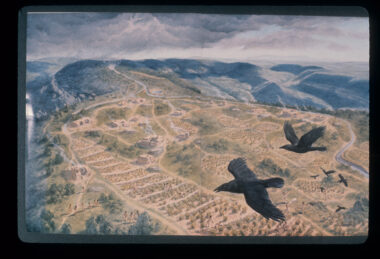Arthur Rohn – “The Neglected Stage of Puebloan Culture History”

A popular assumption among many in the field of Southwestern archaeology describes a natural increase in community size from Basket Maker III in the Pecos Classification through Pueblo III that had been disrupted by a stage of widely dispersed small hamlets and farmsteads during Pueblo II. On the face of it, such a scenario would appear to be quite unlikely, yet it persists. Such dispersal appears to be totally out of line with the record of steady community growth, and the very small units would house too few people to permit viable reproduction of the population.
To test of this concept, I completely excavated the small Pueblo II settlement at the Ewing Site near Yellow Jacket in southwestern Colorado. The results revealed a settlement containing six kivas with associated room blocks arranged in two groupings. Tree-Ring dates plus the fitting together of pieces of pottery and broken stone tools from across the separate units attest to their contemporaneity.
A thorough search of the archaeological literature then found other examples of even larger Pueblo II settlements, although many of them lay beneath later and larger Pueblo III buildings. Two clear cases emerged. On the north end of Chapin Mesa on the Mesa Verde, the remains of some 36 separate Pueblo II structures could be discerned underlying later Pueblo III buildings in the Far View Locality. In the Chaco Canyon, archaeologists have completely excavated four of a total of fourteen surveyed sites, several with more than a single unit of residence, in Marcia’s Rincon.
 All Posts
All Posts